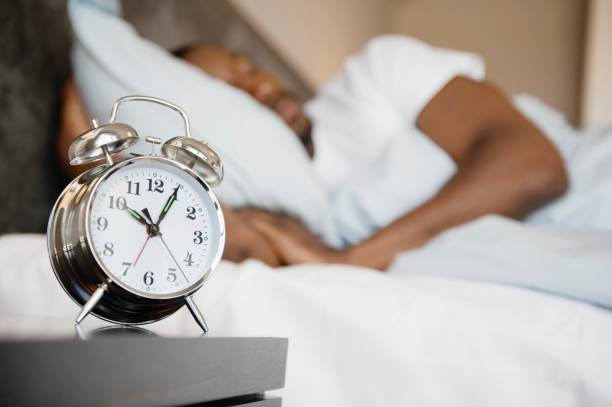
Nothing ruins a good day like a throbbing, painful migraine. Over three million migraine cases are reported each year, and researchers predict this is just the tip of the iceberg, as many tend to manage at home without the doctor’s assistance. While migraines are chronic and incurable, understanding triggers and knowing how to treat them can make living with migraines more manageable.
If you have suffered from migraines in the past, learn a bit more about what is happening to your brain and nervous system, discover ways to identify those triggers, and lessen the disruptive nature of migraines.
RELATED: What Causes Menstrual Migraines? Symptoms & Treatments
What is a Migraine?
Migraines are often written off as intense headaches, but they are actually a complex neurological disorder that can be very disabling. They can severely impact daily activities and, in certain cases, may even indicate a more serious underlying condition, like a stroke.
There are typically four stages of migraines:
Prodrome:
Also known as the premonitory or pre-headache phase, this stage can start hours or even days before the headache. Symptoms may include mood changes like irritability or depression, fatigue, food cravings, and increased urination.
Aura:
During this stage, sensory, motor, and/or speech symptoms act as a warning for an impending migraine. Visual disturbances like flashing lights or blind spots and sensations like numbness, tingling, or weakness are common. The aura phase typically lasts between five and 60 minutes.
Headache:
This is the most well-known stage, marked by intense, throbbing pain on one side of the head. It often comes with nausea, vomiting, and heightened sensitivity to light, sound, and touch. The headache phase can persist from a few hours up to 72 hours.
Postdrome:
Sometimes referred to as the “migraine hangover,” postdrome occurs after the headache starts to fade. Symptoms can include fatigue, brain fog, light and sound sensitivity, and sometimes head pain. This phase can last anywhere from several hours to days.
As you can see, migraines are so much more than just headaches. For those who experience migraines, it’s so important to seek out support and get the attention you need to live well with a diagnosis. Fortunately, there is much you can do to manage and prevent your migraines.
RELATED: What Causes Migraines and What Not to Do While Experiencing One

Causes of Migraines
While the exact cause is still being studied, it’s believed that migraines involve abnormal brain activity, changes in nerve signals, chemicals, and blood vessels. Here’s a closer look at the potential causes and triggers:
1. Genetic Factors
- Heredity: Migraines often run in families.
- Brain sensitivity: Genetic factors may make the brain more sensitive to stimuli, increasing the risk of migraines.
2. Environmental Factors
- Stress: This is a major trigger, potentially causing tension headaches that can develop into migraines.
- Hormonal changes: Fluctuations in estrogen levels, particularly during menstruation, pregnancy, and menopause.
- Sensory stimuli: Bright lights, loud sounds, and strong smells are common triggers.
- Sleep disruptions: Both too much and too little sleep are causes.
- Weather changes: Sudden shifts in weather or atmospheric pressure.
- Food and drinks: common items like aged cheese, red wine, caffeine, and chocolate.
- Medications: Oral contraceptives and certain pain relievers.
3. Brain Activity
- Chemical imbalances: Fluctuations in neurotransmitters like serotonin and CGRP are believed to contribute to the inflammation and pain seen in migraines.
- Nerve involvement: The trigeminal nerve, which is involved in facial sensation, may play a key role.
RELATED: Blacks and Causes of Migraines: How Many is Too Many?

How to Cope and Prevent Migraines
If you experience migraines, talk to your doctor about your specific needs and potential medications. Additionally, there is plenty you can do to manage your migraines and prevent them in the future. Let’s walk through some options:
Sleep
When your migraine hits, the best thing you can do is find a quiet, dark space and rest. If you’re in the middle of a busy work day, try a 20-minute power nap away from light and sound to hit reset on your mental and physical status.
To encourage better sleep at night, establish regular sleep hours by waking up and going to bed at the same time each day, even on weekends. If you nap during the day, keep it brief—no more than 20 to 30 minutes—to avoid interfering with nighttime sleep.
Create an evening routine that helps you unwind at the end of the day with relaxing activities like listening to soothing music, soaking in a warm bath, or reading a favorite book.
Hydrate
Does it feel like I am always talking about water?? I can’t help it – the benefits are endless!
The ultra-superpower that is water can prevent dehydration, a key migraine trigger for many people. One study even found that water eased their migraine just 30 minutes after drinking a full glass. Sipping on water throughout the day can prevent dehydration and can also help you manage other symptoms during a migraine, like nausea.

Eat Well
Food influences every function of the body, so it comes as no surprise that it can either trigger or soothe your migraines. As mentioned above, foods like caffeine, alcohol, chocolate, aged cheese, and other foods containing sulfites, MSG, or nitrates can trigger migraines. Foods containing omega-3 fatty acids, magnesium, fiber, and B vitamins are known to relieve and prevent migraine headaches.
RELATED: 5 Factors That Predict Causes of Migraines and When One Will Strike
Manage Stress
Stress is an inevitable part of life, but there are ways to manage it and ensure it doesn’t become chronic. Since it can become a huge influence on our physical and emotional wellness, it is important to identify stressors in your life and eliminate them or find ways to cope with them.
One of the best forms of stress relief is relaxation and breathwork. Prioritizing downtime and disconnection from stressors can change your overall health, especially when it comes to migraines. Try calming breaths and other techniques while you disconnect to increase the benefits of relaxation.

Keep a Migraine Diary
Look out for yourself! The best way to learn more about your migraines and how to manage them is to understand what triggers them. Keeping a migraine diary can help you do just that. Note what happens right before a migraine hits. Did you indulge in some chocolate cake and red wine? Maybe bright lights shine through your window at night. Noticing these details and identifying them can help you avoid triggers in the future.
Did you experience a particularly good day migraine-free? Take note of what happened that day – maybe you went for a long walk in nature or took a 20-minute catnap. Incorporate those positive actions into your everyday life to lessen the effects of migraines in the future.









